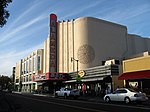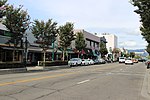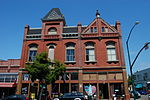Pacific Coast Engineering

The Pacific Coast Engineering Company or PACECO is an American industrial fabricator and mechanical engineering company, and was previously a shipbuilding company in Oakland, California and then Alameda, California. To support the World War II demand for ships, PACECO shipyard switched over to military construction and built US Navy Tugboats. As early as February of 1920, PACECO was reported to be bidding on a contract to make alterations or improvements to a Japanese steamer in Seattle. Started as a mechanical engineering company, PACECO began operations in its Oakland shipyard in 1922. The Oakland shipyard at the 14th Street terminus was acquired by the US. Navy in 1940 for World War II needs. PACECO moved the shipyard to 350 Blanding Avenue, Alameda. The new yard did prefab sub assemblies for the other Bay Area shipyards, like the Richmond Shipyards. In 1943, PACECO built its first of five US Navy tugboats. After the war, PACECO built tugboats, barges, and container cranes. The first quayside container gantry crane was developed by PACECO in 1959. PACECO was sold to Fruehauf Trailer Corporation in 1967. Fruehauf ended shipbuilding in 1976 and changed to build primarily container crane and container chassis. The Alameda shipyard was on the south side of the Tidal Canal, just west of the Park Street Bridge on the Oakland Estuary in the San Francisco Bay Area. As of 2021, the site was a vacant lot.
Excerpt from the Wikipedia article Pacific Coast Engineering (License: CC BY-SA 3.0, Authors, Images).Pacific Coast Engineering
Oak Street,
Geographical coordinates (GPS) Address Nearby Places Show on map
Geographical coordinates (GPS)
| Latitude | Longitude |
|---|---|
| N 37.772343 ° | E -122.239723 ° |
Address
Oak Street 2099
94501
California, United States
Open on Google Maps








